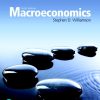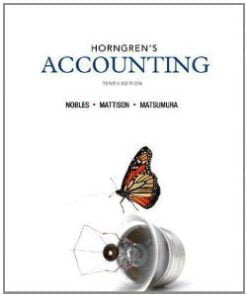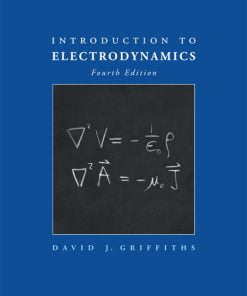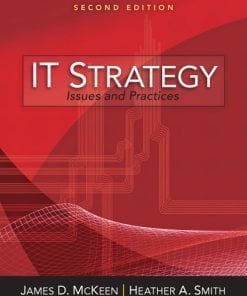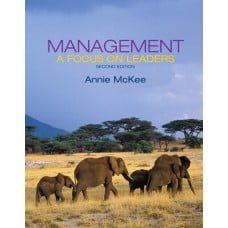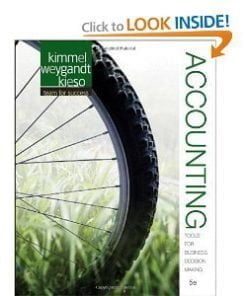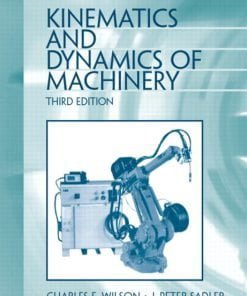Solution Manual for Conceptual Chemistry, 5/E 5th Edition John A. Suchocki
$55.00 Original price was: $55.00.$29.99Current price is: $29.99.
Solution Manual for Conceptual Chemistry, 5/E 5th Edition John A. Suchocki
Solution Manual for Conceptual Chemistry, 5/E 5th Edition John A. Suchocki
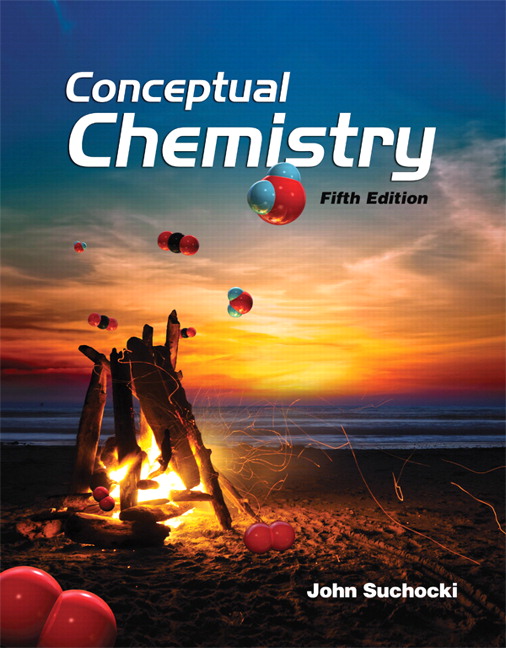
Product details:
- ISBN-10 : 0321804414
- ISBN-13 : 978-0321804419
- Author: John Suchocki
A long-established leader in liberal arts chemistry, John Suchocki’s Conceptual Chemistry continues to take a student-centered approach in the new Fifth Edition. This robust program uses a conversational writing style to engage and involve non-science majors, helping them visualize the behavior of atoms and molecules to understand our macroscopic environment. With a focus on fundamental concepts – not mathematical models.
Table contents:
1 About Science
1.1 Science Is a Way of Understanding the Natural World
The Wheel of Scientific Inquiry
1.2 The Discovery of the Buckyball
Check Your Answer
1.3 Technology Is Applied Science
Risk Assessment
Check Your Answer
1.4 We Are Still Learning about the Natural World
Check Your Answer
Why Should We Learn Science?
1.5 Chemistry Is Integral to Our Lives
Check Your Answer
1.6 Scientists Measure Physical Quantities
Chapter 1 Review
Summary of Terms (Knowledge)
Reading Check Questions (Comprehension)
1.1 Science Is a Way of Understanding the Natural World
1.2 The Discovery of the Buckyball
1.3 Technology Is Applied Science
1.4 We Are Still Learning about the Natural World
1.5 Chemistry Is Integral to Our Lives
1.6 Scientists Measure Physical Quantities
Confirm the Chemistry (Hands-On Application)
Think and Solve (Mathematical Application)
Think and Compare (Analysis)
Think and Explain (Synthesis)
1.1 Science Is a Way of Understanding the Natural World
1.2 The Discovery of the Buckyball
1.3 Technology Is Applied Science
1.4 We Are Still Learning about the Natural World
1.5 Chemistry Is Integral to Our Lives
1.6 Scientists Measure Physical Quantities
Think and Discuss (Evaluation)
Readiness Assurance Test (RAT)
Answers to Calculation Corners (Unit Conversion)
2 Particles of Matter
2.1 The Submicroscopic World Is Super-Small
2.2 Discovering the Atom
Check Your Answer
2.3 Mass Is How Much, and Volume Is How Spacious
Check Your Answer
2.4 Density Is the Ratio of Mass to Volume
Check Your Answer
Check Your Answers
2.5 Energy Is the Mover of Matter
Check Your Answer
2.6 Temperature Is a Measure of How Hot—Heat It Is Not
Check Your Answer
Check Your Answer
2.7 The Phase of a Material Depends on the Motion of Its Particles
Check Your Answer
Familiar Terms Are Used to Describe Phase Changes
2.8 Gas Laws Describe the Behavior of Gases
Boyle’s Law: Pressure and Volume
Check Your Answers
Charles’s Law: Volume and Temperature
Check Your Answer
Avogadro’s Law: Volume and Number of Particles
Check Your Answer
The Ideal Gas Law and Kinetic Molecular Theory
Check Your Answer
Check Your Answer
Chapter 2 Review
Summary of Terms (Knowledge)
Reading Check Questions (Comprehension)
2.1 The Submicroscopic World Is Super-Small
2.2 Discovering the Atom
2.3 Mass Is How Much and Volume Is How Spacious
2.4 Density Is the Ratio of Mass to Volume
2.5 Energy Is the Mover of Matter
2.6 Temperature Is a Measure of How Hot—Heat It Is Not
2.7 The Phase of a Material Depends on the Motion of Its Particles
2.8 Gas Laws Describe the Behavior of Gases
Confirm the Chemistry (Hands-On Application)
Think and Solve (Mathematical Application)
Think and Compare (Analysis)
Think and Explain (Synthesis)
2.1 The Submicroscopic World Is Super-Small
2.2 Discovering the Atom
2.3 Mass Is How Much and Volume Is How Spacious
2.4 Density Is the Ratio of Mass to Volume
2.5 Energy Is the Mover of Matter
2.6 Temperature Is a Measure of How Hot—Heat It Is Not
2.7 The Phase of a Material Depends on the Motion of Its Particles
2.8 Gas Laws Describe the Behavior of Gases
Think and Discuss (Evaluation)
Readiness Assurance Test (RAT)
Answers to Calculation Corner (Manipulating an Algebraic Equation)
Scuba Diving and Hot Air Balloons
3 Elements of Chemistry
3.1 Matter Has Physical and Chemical Properties
Check Your Answer
Distinguishing Physical and Chemical Changes Can Be Difficult
Check Your Answer
Check Your Answer
3.2 Elements Are Made of Atoms
Check Your Answer
3.3 The Periodic Table Helps Us to Understand the Elements
Periods and Groups
Check Your Answer
Check Your Answer
3.4 Elements Can Combine to Form Compounds
Check Your Answer
3.5 There Is a System for Naming Compounds
3.6 Most Materials Are Mixtures
Check Your Answer
Mixtures Can Be Separated by Physical Means
3.7 Matter Can Be Classified as Pure or Impure
Check Your Answer
3.8 The Advent of Nanotechnology
Check Your Answer
Chapter 3 Review
Summary of Terms (Knowledge)
Reading Check Questions (Comprehension)
3.1 Matter Has Physical and Chemical Properties
3.2 Elements Are Made of Atoms
3.3 The Periodic Table Helps Us to Understand the Elements
3.4 Elements Can Combine to Form Compounds
3.5 There Is a System for Naming Compounds
3.6 Most Materials Are Mixtures
3.7 Matter Can Be Classified as Pure or Impure
3.8 The Advent of Nanotechnology
Confirm the Chemistry (Hands-On Application)
Think and Solve (Mathematical Application)
Think and Compare (Analysis)
Think and Explain (Synthesis)
3.1 Matter Has Physical and Chemical Properties
3.2 Elements Are Made of Atoms
3.3 The Periodic Table Helps Us to Understand the Elements
3.4 Elements Can Combine to Form Compounds
3.5 There Is a System for Naming Compounds
3.6 Most Materials Are Mixtures
3.7 Matter Can Be Classified as Pure or Impure
3.8 The Advent of Nanotechnology
Think and Discuss (Evaluation)
Readiness Assurance Test
(RAT)
Answers To Calculation Corner
(How Pure Is Pure?)
4 Subatomic Particles
4.1 Physical and Conceptual Models
Check Your Answer
4.2 The Electron Was the First Subatomic Particle Discovered
Check Your Answer
Check Your Answer
4.3 The Mass of an Atom Is Concentrated in Its Nucleus
4.4 The Atomic Nucleus Is Made of Protons and Neutrons
Check Your Answer
Check Your Answer
4.5 Light Is a Form of Energy
Check Your Answer
4.6 Atomic Spectra and the Quantum Hypothesis
Check Your Answer
The Quantum Hypothesis
Check Your Answer
Check Your Answer
4.7 Electrons Exhibit Wave Properties
Check Your Answer
Probability Clouds and Atomic Orbitals Help Us Visualize Electron Waves
Check Your Answer
Check Your Answer
Each Orbital Can Hold up to Two Electrons
Energy-Level Diagrams Describe How Orbitals Are Occupied
Check Your Answer
4.8 The Noble Gas Shell Model Simplifies the Energy-Level Diagram
Check Your Answer
4.9 The Periodic Table Helps Us Predict Properties of Elements
Why Atoms toward the Upper Right Are Smaller
The Smallest Atoms Have the Most Strongly Held Electrons
Check Your Answer
Chapter 4 Review
Summary of Terms (Knowledge)
Reading Check Questions (Comprehension)
4.1 Physical and Conceptual Models
4.2 The Electron Was the First Subatomic Particle Discovered
4.3 The Mass of an Atom Is Concentrated in Its Nucleus
4.4 The Atomic Nucleus Is Made of Protons and Neutrons
4.5 Light Is a Form of Energy
4.6 Atomic Spectra and the Quantum Hypothesis
4.7 Electrons Exhibit Wave Properties
4.8 The Noble Gas Shell Model Simplifies the Energy-Level Diagram
4.9 The Periodic Table Helps Us Predict Properties of Elements
Confirm the Chemistry (Hands-On Application)
Think and Solve (Mathematical Application)
Think and Compare (Analysis)
Think and Explain (Synthesis)
4.1 Physical and Conceptual Models
4.2 The Electron Was the First Subatomic Particle Discovered
4.3 The Mass of an Atom Is Concentrated in Its Nucleus
4.4 The Atomic Nucleus Is Made of Protons and Neutrons
4.5 Light Is a Form of Energy
4.6 Atomic Spectra and the Quantum Hypothesis
4.7 Electrons Exhibit Wave Properties
4.8 The Noble Gas Shell Model Simplifies the Energy-Level Diagram
4.9 The Periodic Table Helps Us Predict Properties of Elements
Think and Discuss (Evaluation)
Readiness Assurance Test
People also search:
conceptual chemistry 5th edition pdf
conceptual chemistry 5th edition
conceptual chemistry 5th edition pdf free download
conceptual chemistry 5th edition answers
Related products
Solution Manual
Solution Manual
Solution Manual for Introduction to Electrodynamics, 4/E 4th
Solution Manual
Solution Manual
Solution manual for Accounting: Tools for Business Decision Making Kimmel Weygandt Kieso 5th Edition
Solution Manual



